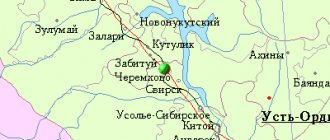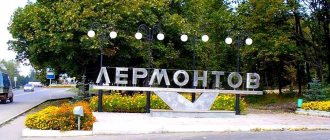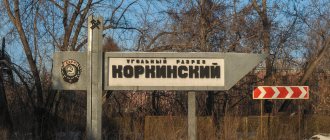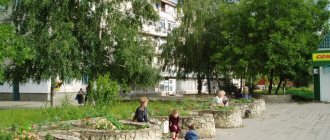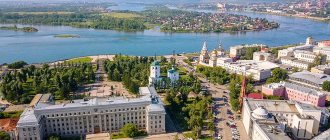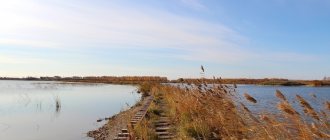Ishim is an ancient city, interesting for its history and attractions. Located in the Tyumen region, on the left bank of the Ishim River (from which it got its name).
Ishim was founded in 1670 (according to other sources in 1687) as Korkina Sloboda. In 1721, by decree of Peter I, Korkina Sloboda turned into the center of the Ishim district. In 1782, by decree of Catherine II, the settlement was renamed the district town of Ishim. This gave impetus to the rapid development of the settlement. The settlement had an advantageous position, being on the main Siberian highway. The Nikolskaya Fair was held here, which was one of the 12 largest fairs in the country. In 1782, there were already three fairs in Ishim - in May, August and December.
In 1875, the Ishim City Bank opened. By the end of the 19th century, there were 5 leather factories, 4 soap factories, 6 sheepskin factories, 8 rolling mills, 16 blacksmith shops, 8 brick factories, 2 vodka factories, 2 candle factories, 2 oil mills and 1 brewery operating in Ishim. In the 19th century, educational institutions appeared. In 1913, a railway passed through Ishim.
In 1793, on the high bank of the river, the Ishim people built the city's first stone church - the Epiphany Cathedral. It has survived to this day.
Another church, Nikolskaya, was built in 1891 at the expense of the merchant Nikolai Chernyakovsky. The townspeople planted a garden near the church. The merchant-philanthropist Nikolai Chernyakovsky and Archpriest Theodore, who planted this garden, are buried near the walls of the church.
In the first years of Soviet power, Ishimsky district thundered as the center of a large West Siberian peasant uprising, which occurred in 1921. The Ishim uprising became the largest anti-government uprising in Soviet Russia. More than 70 thousand people took part in it. The rebellion covered a large area. The last centers of the uprising were eliminated only by the end of 1922. More than 300 people who died during the suppression of the uprising are buried in the old Ishim cemetery. There is a monument on the site of the mass grave.
It is very interesting to stroll through the historical center of Ishim, where many merchant houses from the late 19th – early 20th centuries have been preserved. In total, the city has more than forty historically significant buildings. In 1990, the city of Ishim was approved in the list of historical populated places of the RSFSR.
The lives of many famous people are connected with Ishim: the writer Pyotr Ershov, the Decembrists Alexander Odoevsky and Vladimir Steingeil, the chief designer of the Ostankino TV tower Nikolai Nikitin and others. The historian P.A. visited Ishim. Slovtsov, chemist D.I. Mendeleev, German scientist A. Humboldt, writer A.P. Chekhov.
The story of Praskovya Lupolova is very interesting, which few outside Ishim know. She was the daughter of the retired warrant officer Grigory Lupolov, deprived of his nobility, who in 1798 was sent into exile in Ishim with his entire family after being accused of harboring thieves and stolen horses. Wanting to “beg mercy” for her father, Praskovya set off from Ishim on foot to St. Petersburg, hoping to get an appointment with Emperor Alexander I himself. It took her almost a year to get to the capital: sometimes on foot, sometimes on carts, sometimes on barges. On August 5, 1804, Praskovya Lupolova found herself in St. Petersburg. She managed to get to Empress Maria Feodorovna (mother of Alexander I), and the Tsar’s wife, Elizaveta Alekseevna. After this, the case of Praskovya’s father was reviewed, and the family was able to return.
The brave girl became the prototype for works of art by both a number of Russian and some Western European writers, entering cultural history under the names Elizaveta and Parasha Sibiryachki.
In 2004, a monument was erected in her honor on the central square of Ishim. The inscription on the pedestal reads: “Praskovya Lupolova, who showed the world the feat of daughterly love.”
There is also a monument to another exile in the city - the Decembrist poet Alexander Odoevsky.
In addition, a monument to Joseph Stalin, whose rule distorted the lives of millions of people, was erected in Ishim. The bust of this executioner was accidentally found in 1999 in the park during excavation work. It was handed over to the communists, who did not hesitate to put it back on the pedestal on Oktyabrskaya Square.
On June 13, 2015, to commemorate the 200th anniversary of the birth of the famous Siberian storyteller, the second monument to Pyotr Ershov, the author of “The Little Humpbacked Horse,” was opened in the Tyumen region.
Also in Ishim there is the only literary museum of Peter Ershov in Russia. It is located at: st. Sovetskaya, 30. Tel.: (34551) 2-31-41.
Ershov spent his childhood in the mountains just a few kilometers from Ishim - in the village of Bezrukovo.
There is a local history museum in the city of Ishim. The museum's exhibitions are located in two buildings:
- "City Government" - st. Lenina, 64. Phone: (34551) 2-11-45, 2-16-92.
- "Chernyakovskaya school" - st. Leningradskaya, 29. Telephone: (34551) 2-20-93, 2-20-37.
The museum is open from 09:00 to 17:00 every day except Sunday.
The population of Ishim today is 65 thousand people.
In the vicinity of the city there is a natural monument of federal significance - Sinitsinsky Bor. This is a forest area with areas of relict forest and rare plant species. People's Park and Birch Grove are regional natural monuments.
On the way to Ishim, it is worth visiting another interesting city in the Tyumen region - Yalutorovsk, interesting for its Yalutorovsk fortress, the Decembrist Museum and its monuments.
General information and history of Ishim
The city of Ishim is located on the banks of the river of the same name (in fact, it received its name from the name of the river at the behest of Empress Catherine II).
The city, although small, is system-forming, because it lies at the intersection of several roads - the Trans-Siberian Railway and two federal highways (directions: West-East and North-South); the route to Kazakhstan, the Far East and the north passes through Ishim Tyumen region.
Railway station building. Photo by Yu. Luchin (https://fotki.yandex.ru/users/ypluchin/)
Thanks to this location, Ishim was born. The founding date of the city is traditionally considered to be 1687 (according to Miller’s “portfolios”), but there is no exact information - modern historians give dates from 1670 to 1687. Around those years, Korkina Sloboda was founded - a village around a wooden fort - a military fortification of Russian borders from raids by Siberian nomads. For some time, this fort was the main Russian outpost in the Ishim line, but after the founding of the Peter and Paul Fortress, the city (since 1782 the settlement began to be called a city) lost its military significance, but its economic position strengthened.
The Nikolskaya Fair played an important role in it - agricultural products from the Ishim region were distributed not only throughout the country. Oil, for example, was exported. Industry lagged somewhat behind trade (now this gap has widened even further).
City Museum of History and Local Lore
The museum has been open to visitors since 1923. It houses a permanent local history exhibition, represented by several halls showing the nature of the Ishim region, the traditions of the city, episodes of wars of the 20th century, and times of revolution.
The museum also hosts exhibitions and temporary exhibitions from other cities. The guides do their work professionally and efficiently, introduce you to the history of the city in an interesting and fascinating way, and their stories are remembered for a long time. You should definitely visit such exhibitions as: Merchant's shop, 20th century in the era of socialist realism, Moscow-Siberian highway, Korkinsky prison.
Location: Leningradskaya street - 29.
Climate and ecology of Ishim
The climate of Ishim is moderate continental. Winters are quite frosty and long, summers are short and hot. Due to the abundance of snow, spring seems protracted, but if the weather is warm and sunny, it can be very fleeting. Autumn flies by almost unnoticed - the rains are usually not too annoying and are soon replaced by frosts.
Recently, one can often observe weather phenomena that are quite unusual for a particular season - snow in June or, conversely, its absence in early December, flowering of plants in October and large hail in July. But there are no earthquakes in this area, but there have been hurricanes, although they were quite “mild” - far from American tornadoes.
Winter in 2011. Photo by ub (https://fotki.yandex.ru/users/ubravnets/)
The city is surrounded by forests, meadows, hills and lakes, in which fish are found (for now). In the 18th century, the suburb of Ishim was famous for its fish most of all - this was reflected in the city’s coat of arms: it depicts a golden crucian carp on a blue background. Now, of course, there is no such abundance, but you can sit on the shore with a fishing rod and you won’t go hungry. Wildlife in the forests has also decreased, “thanks” to poachers, but there is still something left for law-abiding hunters.
In the city itself, the air is quite clean, especially when compared with megacities, and there is not much noise. The whole picture is spoiled by periodic unpleasant odors. The reason for them is. But there is hope that soon the production of this organization will be moved outside the city; now the issue is being resolved in the region.
There are no such strong emissions of pollution from other enterprises, as well as from the enterprises themselves. But more on that later.
There remains a small problem with the purity of the water - its quality deteriorates significantly in the spring, during the flood period. The rest of the time, the water (drinking) in the city is tolerable, except for the excess chlorine in it after scheduled cleaning. But the water in Ishim rivers and lakes, although it does not have strong sources of pollution, is practically unsuitable for swimming. The sandy bottom on the city beach is maintained artificially (you can swim there), but in the small rivers there is no sand, and no one is cleaning them, so they are overgrown with mud and duckweed, and some residents also help the pollution by throwing household garbage into the water.
By the way, this same garbage in Ishim ends up not only in water bodies, city streets also suffer from unauthorized dumps. Installing more garbage containers would probably solve this issue, but the administration prefers to collect fines.
Recreation center "Forest Fairy Tale"
Country holidays will be appreciated by both lovers of tranquility and active, noisy groups. The recreation center, located on the river bank at the foothills, provides a variety of services for quality outdoor recreation. Picturesque walks in the forest, fishing, catamaran rides and sports games are a great excuse to go on vacation.
Population of Ishim
Urbanists classify “small” Ishim as a medium-sized city, since the number of residents in it is about 65 thousand.
The number of urban residents has remained at approximately this level for many years, only minor fluctuations are noticeable - there seems to be no loss, but there is not enough natural growth either. However, maternal capital has done its job, and in the last 5-6 years there have been more children in Ishim; the number of large families is growing. The needs of the children's population are provided by 14 kindergartens and 12 schools (of which 2 correctional and 1 parochial), an interschool educational center and a general education lyceum. There are also schools for additional education: music, sports, art.
School No. 31, Ishim
There is no exact data on the age composition of the Ishim people, but we can say with confidence that there are many young people among them. Ishim is even called a city of students - in terms of the number of students in universities and colleges per 10 thousand population, Ishim ranks second in Russia after Tsarskoe Selo. Thus, more than 3 thousand people study at the Ishim State Pedagogical Institute named after P. P. Ershov, which will now be part of the Tyumen State University. Unfortunately, the branches of Tyumen State University and Tyumen State University have already been closed, they also attracted young people to the city, but there are still schools: Ishim Agricultural College, Polytechnic College, Medical College and Lyceum No. 46 (“Maslodelka”).
Ishim Agricultural College
The majority of the residents are people of working age, as it should be. There are about 16.5 thousand pensioners (not only by age, but also by social security) - in general, that’s also a lot.
Monument to the Little Humpbacked Horse
Ishim is often called the city of the Little Humpbacked Horse. It was in this city, just a few kilometers away, that the famous writer was born and spent his childhood years. Throughout the city you can see the heroes of the fairy tale; there is a monument to Ivan and the Little Humpbacked Horse right there. Nearby in the city park there is a cafe “Residence of the Little Humpbacked Horse”.
Districts and real estate in Ishim
Ishim can be roughly divided into 3 parts: Center, Zalineyka and Western part. In each of these areas, smaller areas can be distinguished.
Center
The center is, of course, that part of the city that is the busiest and most densely populated (if this can be said about Ishim - the population density here is low) and is located close to the “guest street” - st. Karl Marx. Here we can distinguish “subdistricts”: the railway station area, the “hotel”, the “technical school” - all these territories are located just along K. Marx Street to the street named after. Lenin, where another microdistrict begins - the market. This is what the central part of Ishim looks like. Residents of these territories receive all the corresponding benefits:
- complete improvement (uninterrupted heating, cold and hot water supply, telephone communications, cable television and all other modern innovations),
- cleanliness of the streets (absence of landfills and timely cleaning of areas - snow removal, watering asphalt in the summer and sprinkling sand in the winter),
- proximity to shops and shopping centers,
- improved appearance of the streets - lawns, flower beds, many lanterns, paving stone sidewalks and beautiful benches.
The only downside to living in this area is the high cost of housing. (A one-room apartment will cost from 1 to 2 million rubles, a three-room apartment - from 2 to 5, renting a three-room apartment costs from 20,000 rubles per month). It is also a little noisy here, but the noise range cannot be compared with large cities.
The area is dominated by apartment buildings - 4 and 5 storeys along K. Marx Street; individual residential buildings diverge away from the “guest” street; occasionally there are also wooden two-story buildings with several apartments, but those that are not recognized as historical monuments, are subject to demolition, and will soon completely disappear from the map of the city.
Individual residential buildings in the center of Ishim
Since the area is “elite”, the people living here are appropriate, some of them are so proud of their “place of residence”. The majority of the population here, although not feignedly aristocratic, is intelligent and friendly.
K. Marx Street after reconstruction. Instead of spreading tree branches there are now “bare stamens” - thanks to the city administration
The center can also include 2 other microdistricts. If you move along Lenin Street south of the street. K. Marx, then you end up in Kiselevka. And if you move from K. Marx to the north, then to the territory that the locals call “Kapai”. Since both areas are located in close proximity to the city center, real estate prices here also remain high.
There are no apartment buildings in these neighborhoods anymore, but luxury cottages are growing like mushrooms. The cost of such mansions ranges from 3 to 10 million rubles. There are still a lot of rather old houses and cottages left, but their owners are also trying to keep up with the times - gradually dilapidated housing is being demolished, new and modern ones are being built, and those houses that are still quite suitable for living are undergoing high-quality overhauls (at the expense of owners, of course). Secondary individual housing in this sector (with a plot of land of 6-8 acres) will cost from 800 thousand to 2 million rubles, depending on the area of the house).
The disadvantages of these areas are probably the same as everywhere else - the further from the center, the worse the roads; there are fewer communication services (for example, cable television is not available in remote areas of the private sector, and landline telephone communication is not possible everywhere), but the territories are fully gasified, and the city water supply works. Well, as everywhere else, the further the center is, the more garbage there is. Employees of the Special Vehicle Facility are constantly fighting against unauthorized dumps, but they appear again and again.
"Zalineyka"
Zalineyka is a part of the city separated from the Center by railway. You can get here by car through the only overpass so far, which can be a little problematic, especially in the morning and evening hours - traffic in two lanes can be quite slow (the authorities promise to solve this problem - construction of a new highway bridge has already begun). Another disadvantage of this territory is that the already mentioned Vetsanutil enterprise is located here, and its “aromas” are most strongly expressed in this area.
The non-linear part can be divided into several districts: the Meat Processing Plant district, the PATP district, Avangard, Smirnovka, the Technical Services district, the official 3rd Northern Microdistrict, and Strekhnino is a village that does not officially belong to the city, but is actually adjacent to it - the only difference is under administrative control. In Zalineyka, private housing predominates; high-rise buildings in these areas act as small islands. There are a lot of them only near the service station and in the 3rd Northern microdistrict. By the way, it’s worth talking about it separately. This residential complex is being built at the expense of the municipality to meet the social needs of the city. Construction in this area began only a few years ago, but it continues actively; apartments in new buildings are occupied by doctors, teachers, veterans, orphans, and displaced people from dilapidated housing. A construction site for a kindergarten is being prepared, there is a pharmacy and a library, and Ishim Regional Hospital No. 4 is located in close proximity.
Real estate located in the off-line part is somewhat cheaper, but the difference in cost is not that big. The cost of a one-room apartment or house starts from 700 thousand rubles, a three-room apartment can be purchased for 1.8-2 million rubles.
Western part of the city
The Western part of the city can conditionally include the territory that is located behind the market, towards the west, respectively. The territory includes Zhilyakovka, Khutor (or convoy area), Vankovka, Yuzhny microdistrict and Voroshilovka.
It’s worth mentioning separately about Voroshilovka; officially it is now considered a Western microdistrict. 90 hectares of land have been allocated here for construction, most of which are planned for high-rise buildings (they even want to build nine-story buildings, but now the tallest building in the city occupies only 6 floors). In the same area they are planning to allocate plots for individual housing construction to large families. At this time, the private sector is already growing and developing here: some houses, or rather cottages, are not inferior in architecture to European projects. The cost of such “houses” is, of course, lower than in Europe, but for Ishim the price is also decent - from 4 to 10 million. A 3-room economy class housing (with a plot of 6-7 acres) costs about 2 million rubles.
The disadvantage of this territory is its distance from the central part of the city and, accordingly, poorly developed infrastructure: there are few schools and kindergartens here, but everything is in order with landscaping - engineering systems are connected and working properly.
City infrastructure
Housing and communal services
The state of Ishim's social infrastructure can be called satisfactory. The housing and communal services system is working properly. There are, of course, accidents (officials like to save on materials during planned repairs), but their consequences are eliminated within a reasonable time. In general, water, gas and electricity flow into homes and businesses uninterruptedly (if there are no debts).
Residents of Ishim learn about exorbitant tariffs for housing and communal services only from federal news. Of course, gas here is more expensive than in Ukraine (although it is produced in the Tyumen region, apparently, transporting it to the south of that region costs more than to Europe), but, in general, the tariffs are tolerable. Sometimes there are unreasonable increases in rents, but after citizens file complaints, usually all issues are resolved positively.
The city administration cannot yet resolve the issue with garbage, because it is a “double-edged sword” - it cannot be done without the assistance (or at least understanding) of the population.
Roads and traffic jams
Roads... Well, their description can be limited to just one word - Russia. Potholes, pits and ruts are a common condition of both highways and city road surfaces. Repairs are carried out periodically, but most of them are patchy, and the results last for a maximum of a year. Currently, there are no holes or potholes only on the street named after K. Marx and the surrounding areas. True, you won’t find too large “ditches” on the city’s roads either; although the potholes interfere with traffic, local drivers are used to them. And not all areas are paved; it is practically impossible to get into some areas in the off-season in a low sedan.
There are almost no traffic jams in the city. The only place of minor congestion is the overpass over the railway tracks, which was mentioned above. There are not so many cars in Ishim, and many people prefer to get to work by buses and minibuses.
There are no other types of transport in the city, except for numerous taxi services. For intercity communication, buses and trains are used.
Medicine
The level of medical care in Ishim is a sore point. More or less high-quality services can only be obtained in paid institutions. But many townspeople are not happy with the Ishim Regional Hospital No. 4, and visitors prefer not to go there. With all serious symptoms, Ishim residents immediately go to Tyumen; many women prefer to give birth there.
There is even a saying among people: “it is better to die immediately than to wait in line to see a doctor” - be it a therapist, an infectious disease specialist or any other specialist. And the fact of visiting a doctor often does not solve the problem. So, if they cannot find the cause of the disease, some patients are advised to “just drink ascorbic acid.” The situation is a little better with children's clinics, they work properly, you can almost always get an appointment, but the level of qualifications of doctors does not always please patients.
Sculptures of beautiful maidens
Several sculptural compositions in Ishim are dedicated to the fair sex. You want to linger next to them and take pictures.
Monument to P.G. Lupolova
- Address: Litvinova street.
Praskovya Lupolova was born in Ishim into the family of an exiled nobleman. Her father was accused of harboring thieves and stolen horses, which is why he and his entire family were forced to eke out a miserable existence in a Siberian town.
To help her parents, Praskovya worked hard and received bread instead of money. In 1803, the girl decided to go to St. Petersburg and beg Emperor Alexander I for mercy for her father.
Having with her one ruble, an icon and a parental blessing, Praskovya set off on foot for the capital. Her journey lasted more than a year. In August 1805, the girl reached St. Petersburg, where her father’s old friends took care of her. Soon Praskovya was introduced to the imperial couple.
By decree of Alexander I, the case of Grigory Lupolov was reviewed. He received forgiveness and permission to return to his homeland.
Praskovya's feat became famous throughout the country. Many newspapers wrote about the girl, and the St. Petersburg nobility sought a meeting with her. Praskovya, in turn, did not strive for fame; she decided to go to the Tithe Monastery. However, Praskovya did not have time to become a nun. The girl died of tuberculosis a few weeks before taking monastic vows.
The monument to Praskovya was erected in 2004 in front of St. Nicholas Cathedral. The girl seems to be passing by a temple. She has a staff and an icon in her hands, and a bundle behind her back. The monument is one of the symbols of Ishim. Local residents say that Praskovya is the spiritual name of their city.
Sculpture “Girl with an Apple”
- Address: Beregovaya street.
The sculpture, symbolizing youth and love, is located on the embankment. She depicts a young girl in a light dress with curly hair. She holds a ripe apple in her hands. The girl looks at the river as if looking for someone, perhaps her first love.
Sculpture “Goddess of Health Hygeia”
- Address: st. Lenin (stop "Children's Clinic").
The sculpture was installed in 2022 on Medic Square. The grand opening took place as part of the celebration of Medical Worker Day. A bronze statue of the ancient Greek goddess of beauty and health Hygeia rises on a cubic granite pedestal.
A young woman in traditional Greek dress feeds a snake from a bowl. These attributes - the snake and the cup - are symbols of modern medicine and are known as the "Vessel of Hygeia".
Enterprises and work in Ishim
There are several industrial enterprises located on the territory of Ishim. More or less large ones include:
- Ishim Mechanical Plant (produces spare parts for trains, which are supplied not only to Russian enterprises, but also for export);
- Ishim Machine-Building Plant (mainly produces equipment for the oil and gas complex);
- Ishimselmash plant (produces spare parts for agricultural vehicles).
These enterprises are staying afloat and continue to gain momentum, which means that there will always be work for turners and mechanics.
The food industry is also not standing still. Activities in the city include:
- Ishimsky butter and cheese plant;
- Ishim Meat Processing Plant (Plem);
- Wine and vodka factory;
- Bakery plant;
- Elara LLC (bakery);
- Slada - confectionery factory;
- Polaris soft drink plant;
- “Ishimsky Krupazavod”, which recently opened.
Light industry enterprises are less fortunate: at the moment, one of the workshops of the shoe factory is operating (producing work boots and work boots), and the clothing factory is sewing workwear. The Siberian Carpet Factory is already known all over the world. Currently, this is the only enterprise in the country that produces carpets and rugs from natural wool using unique ancient technologies.
There are also enterprises in the construction industry: Ishimsky. A new concrete production plant opened a couple of months ago, and construction of a new brick plant is planned.
Due to the fairly large number of enterprises in the city, blue-collar specialists are always in demand. The average salary in the region is 30,000 rubles, but in reality it can be as high as 5,000. Still, the standard of living in Ishim is growing, otherwise construction would not have developed, and there would not have been so many retail outlets. Shops occupy the first floors of almost all high-rise buildings along K. Marx Street. There are many shops on other streets. There are several trading centers: a wholesale one on the street. Industrial and retail: “999” (former carpet factory), “Na Severnaya”, “Yuzhnaya”, “Na Kazanskaya”. There are also supermarkets: the Magnit chain of stores, Spar, DNS Corporation, etc. A large number of people work in the retail sector.
SPAR store in the center of Ishim
Entrepreneurship is also actively developing. Thus, 2,868 small and medium-sized businesses are registered in Ishim. The city and regional administrations are trying to support current projects.
Shopping complex at the intersection of K. Marx and Artilleriyskaya streets
Sinitsinsky pine forest
15 km from Ishim, in the area of the village of Sinitsyna, you can immerse yourself in a relict forest and examine the rarest species of plants. The territory of the forest combines a unique landscape and clean air; there are also geothermal springs of mineral water. There are several sanitary and health camps in the forest, including “Berendey” and “Druzhba”.
Children who visited these camps retain a lot of amazing impressions in their memories, and the image of tall pine trees and red squirrels appears before their eyes, even years later. Also on the territory of the Sinitsinsky pine forest there are health and sports complexes, and tourist centers.
Criminal situation
Ishim cannot be called a criminal city. The crime rate here is quite low, but there are some pretty high-profile cases. Thus, several years ago, two employees of the social security department were convicted of fraud - the director of the Social Security Service and an accountant submitted incorrect information about the number of women who were entitled to receive one-time maternity benefits, and the amount received in excess of the norm (about 1.5 million rubles) appropriated to themselves.
Around the same time, a maniac appeared in the Ishim region, attacking women, but he was quickly tracked down and caught.
Otherwise, the criminal characteristics of Ishim are similar to other medium-sized cities: there are petty robberies, thefts, domestic disputes, and sometimes murders (out of jealousy, for example, or through negligence). There are probably no such cases anywhere.



